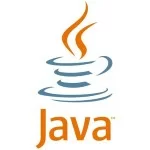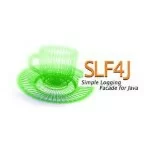How to Apply an AspectJ Pointcut to Every Method in a Package
Aspect-Oriented Programming (AOP) in Java, implemented using AspectJ, allows developers to separate cross-cutting concerns (like logging, security, and transactions) from business logic. A key feature of AspectJ is the use of pointcuts to specify where advice (additional behavior) should be applied in an application. This article explores how to define an AspectJ pointcut for all methods inside a specific package with a few code examples.
1. Understanding AspectJ Pointcuts
In AspectJ, a pointcut defines where advice (cross-cutting logic) should be applied in your code. Pointcuts use expressions to match join points, which represent well-defined points in the execution of a program, such as method calls or object instantiations.
Advice is the action executed by an aspect at a specific join point. Depending on the requirement, the advice can be applied:
- Before the join point using
@Before. - After the join point using
@After. - Around the join point using
@Around.
A typical pointcut expression is structured as:
1 | execution(modifiers-pattern? return-type-pattern declaring-type-pattern? method-name-pattern(param-pattern) throws-pattern?) |
Where only the return-type-pattern, method-name-pattern, and param-pattern are required, the minimal pointcut expression would look like this:
1 | execution(return-type-pattern method-name-pattern(param-pattern)) |
Here’s what each component represents:
- modifiers-pattern: Matches method visibility (e.g.,
public,protected). - return-type-pattern: Matches the return type of the method (e.g.,
*for any return type). - declaring-type-pattern: Matches the class or interface where the method is declared.
- method-name-pattern: Matches the method name (e.g.,
*for any name). - param-pattern: Matches method parameters (e.g.,
(..)) for any number of parameters. - throws-pattern: Matches the exceptions the method declares (optional).
To intercept all methods in the com.jcg.service package, we can define the following pointcut:
1 | execution(* com.jcg.service..*(..)) |
Explanation:
*: Matches any return type.com.jcg.service..: Targets thecom.jcg.servicepackage and all its sub-packages (indicated by the..wildcard).*: Matches any method name.(..): Matches any number of arguments (zero or more).
This pointcut will match the following methods:
1 2 3 4 5 6 | package com.jcg.service;public class MyService { public void performAction() { ... } public String fetchData() { ... }} |
2. Maven Dependencies
To use AspectJ in a Spring Boot application, add the following dependencies to your pom.xml:
01 02 03 04 05 06 07 08 09 10 11 12 13 | <!-- AspectJ --><dependency> <groupId>org.aspectj</groupId> <artifactId>aspectjrt</artifactId> <version>1.9.22.1</version></dependency><!-- AspectJ Weaver --><dependency> <groupId>org.aspectj</groupId> <artifactId>aspectjweaver</artifactId> <version>1.9.22.1</version></dependency> |
The dependency aspectjrt provides the AspectJ runtime library necessary for executing aspects in your application, while aspectjweaver enables weaving, which integrates AspectJ aspects into your application at compile-time, load-time, or runtime. Together, they facilitate the use of AspectJ for logging and security.
3. Code Example
3.1 Application Structure
For this example, assume we have the following package structure:
3.2 Define a Service
Create a simple service class inside the com.jcg.service package.
01 02 03 04 05 06 07 08 09 10 11 12 | @Servicepublic class MyService { public void performAction() { System.out.println("Executing performAction"); } public String fetchData() { System.out.println("Executing fetchData"); return "Sample Data"; }} |
3.3 Create the Aspect
Define an aspect class to log the execution of all methods in the com.jcg.service package.
01 02 03 04 05 06 07 08 09 10 | @Aspect@Componentpublic class LoggingAspect { // Pointcut for all methods in the 'com.jcg.service' package @Before("execution(* com.jcg.service..*(..))") public void logMethodExecution() { System.out.println("All methods in the 'com.jcg.service' package is being executed."); }} |
The pointcut expression in the above LoggingAspect class uses the execution keyword to target method execution join points. The * symbol matches any return type, while com.jcg.service.. specifies all classes within the com.jcg.service package and its sub-packages. The *(..) portion matches any method name with any number and type of arguments. As a result, this pointcut ensures that the advice is triggered before the execution of any method within the specified package.
Main Application:
01 02 03 04 05 06 07 08 09 10 11 12 13 14 15 | @SpringBootApplicationpublic class PointcutMethodInterceptorApplication { public static void main(String[] args) { SpringApplication.run(PointcutMethodInterceptorApplication.class, args); } @Bean CommandLineRunner runner(MyService myService) { return args -> { myService.performAction(); myService.fetchData(); }; }} |
When you run the application, you should see the following output in the console:
1 2 3 4 | All methods in the 'com.jcg.service' package is being executed.Executing performActionAll methods in the 'com.jcg.service' package is being executed.Executing fetchData |
4. Logging Method Arguments
We can log method arguments by using the JoinPoint API:
1 2 3 4 5 6 7 | @Before("execution(* com.jcg.service..*(..))")public void logMethodDetails(JoinPoint joinPoint) { System.out.println("Method name: " + joinPoint.getSignature().getName()); System.out.println("Class name: " + joinPoint.getTarget().getClass().getSimpleName()); System.out.println("Executing method: " + joinPoint.getSignature().getDeclaringTypeName() + "." + joinPoint.getSignature().getName() + " in class: " + joinPoint.getTarget().getClass().getSimpleName());} |
This code defines a @Before advice that intercepts the execution of all methods within the com.jcg.service package and its sub-packages. The logMethodDetails method logs key details about the intercepted method, including its name, the class name where it resides, and the full method signature (declaring type and method name). This helps in tracing and debugging method executions across the specified package.
When you run the application, the console output should look like this:
1 2 3 4 5 6 7 8 | Method name: performActionClass name: MyServiceExecuting method: com.jcg.service.MyService.performAction in class: MyServiceExecuting performActionMethod name: fetchDataClass name: MyServiceExecuting method: com.jcg.service.MyService.fetchData in class: MyServiceExecuting fetchData |
5. Logging All Methods in a Sub-Package
To log methods only in a com.jcg.service.sub sub-package, define a separate pointcut:
1 2 3 4 5 6 7 | // Pointcut for all methods in the 'com.jcg.service.sub' sub-package@Before("execution(* com.jcg.service.sub..*(..))")public void logSubPackageMethods(JoinPoint joinPoint) { String methodName = joinPoint.getSignature().getName(); String className = joinPoint.getTarget().getClass().getSimpleName(); System.out.println("Logging: Executing method inside 'com.jcg.service.sub'package: " + className + "." + methodName);} |
This modular approach allows us to have different behaviors for the main package and its sub-packages.
Sub-Package Service:
01 02 03 04 05 06 07 08 09 10 11 12 | @Servicepublic class SubService { public void executeSubAction() { System.out.println("Executing SubService.executeSubAction()"); } public String getSubData() { System.out.println("Executing SubService.getSubData()"); return "Sub-Package Data"; }} |
Update the main application to test the functionality:
01 02 03 04 05 06 07 08 09 10 11 12 13 14 15 16 17 18 | @SpringBootApplicationpublic class PointcutMethodInterceptorApplication { public static void main(String[] args) { SpringApplication.run(PointcutMethodInterceptorApplication.class, args); } @Bean CommandLineRunner runner(MyService myService, SubService subService) { return args -> { myService.performAction(); myService.fetchData(); subService.executeSubAction(); subService.getSubData(); }; }} |
Expected Output:
When you run the application, the console output should look like this:
01 02 03 04 05 06 07 08 09 10 11 12 13 14 15 16 17 18 | Method name: performActionClass name: MyServiceExecuting method: com.jcg.service.MyService.performAction in class: MyServiceExecuting performActionMethod name: fetchDataClass name: MyServiceExecuting method: com.jcg.service.MyService.fetchData in class: MyServiceExecuting fetchDataMethod name: executeSubActionClass name: SubServiceExecuting method: com.jcg.service.sub.SubService.executeSubAction in class: SubServiceLogging: Executing method inside 'com.jcg.service.sub'package: SubService.executeSubActionExecuting SubService.executeSubAction()Method name: getSubDataClass name: SubServiceExecuting method: com.jcg.service.sub.SubService.getSubData in class: SubServiceLogging: Executing method inside 'com.jcg.service.sub'package: SubService.getSubDataExecuting SubService.getSubData() |
6. Conclusion
In this article, we explored how to use AspectJ pointcuts to intercept and apply cross-cutting concerns to every method within a specific package in a Spring Boot application. We covered the basics of AspectJ pointcut expressions, including how they are structured and how they can target specific join points like method executions.
7. Download the Source Code
This article covered Java AspectJ pointcut to match every method in a package.
You can download the full source code of this example here: Java aspectj pointcut match every method package






